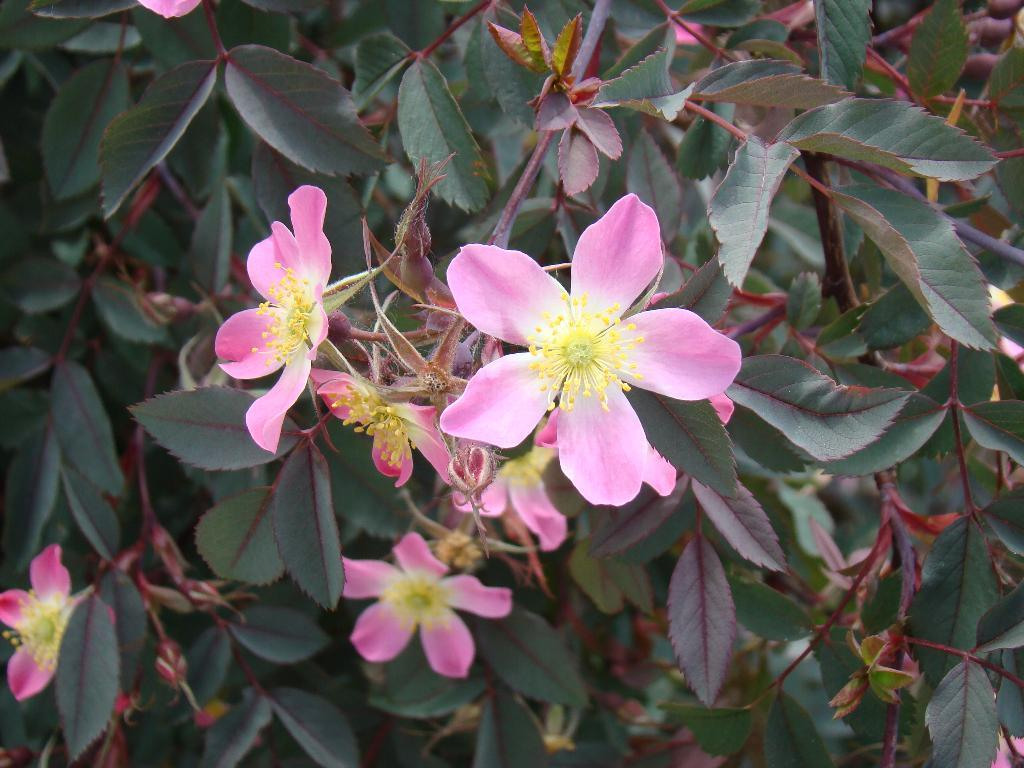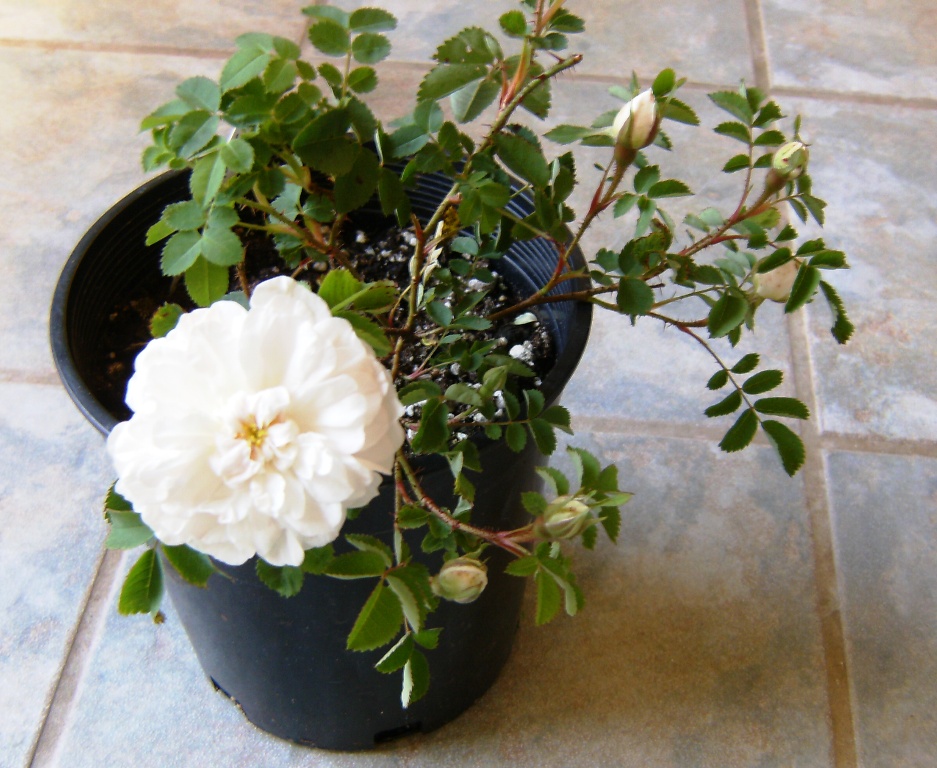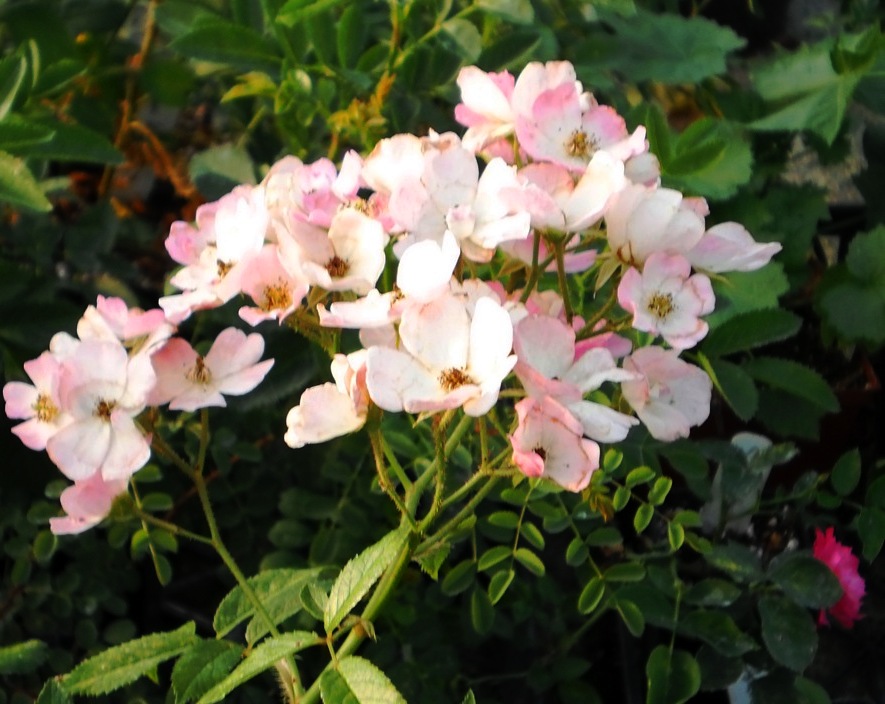One of the great things about this species rose is that it’s attractive for more than one feature. The rose goes by more than one species name, the other common one being Rosa rubrifolia. Sometimes the latin name will reveal something about the plant, and in these two names, there’s a bit of a contradiction: glauca means grey, and rubrifolia means red-leaved. Both are sort of right, and both are sort of wrong. The leaves are green, and yes, there’s a matte grey or blue tinge to them, but there’s also a red or purple tint in the veins and stems. Okay then… that makes the leaves greenish, bluish, greyish, purplish, reddish and then usually yellowish before they drop. That’s a lot of color!
The flowers are attractive, but small and simple. They have five petals, which are darker pink towards the edges and lighter towards the center, where they give way to the prominent yellow stamens. When the flowers are finished their early-season display, the plant goes to work on setting a large crop of red hips, which can decorate the plant well into the winter.
Depending on how and where you grow it, Rosa glauca can be a 4 foot shrub, or grow to as high as 10 feet. It will grow happily in part shade, and like most species roses, will accept less than perfect soil conditions.



